Analysis: How Rivian Beat EVERYONE to Market With the First Electric Pickup

Barely a month has passed since Rivian’s CEO first posted pictures of the company’s fully certified, in-production R1T electric pickup rolling down the Normal, Illinois assembly line. The R1T is here, it’s real, and it’s got the blessing of the NHTSA, EPA, and CARB to prove it – but the fact that the R1T made it to production more-or-less as promised isn’t what I’m here to talk about today.
Instead, I want to talk about how a brash, spunky startup managed to beat not just Ford, and not just GM, but every single established automaker to market to deliver the first modern electric pickup truck … and the answer might not be what you expect.
After months of building pre-production vehicles, this morning our first customer vehicle drove off our production line in Normal! Our team's collective efforts have made this moment possible. Can't wait to get these into the hands of our customers! pic.twitter.com/8ZidwTaXRI
— RJ Scaringe (@RJScaringe) September 14, 2021
RIVIAN AND THE WORLD’S FIRST PRODUCTION ELECTRIC PICKUP *
They say it takes 10 years to become an overnight success, and if you’re already familiar with that little bromide it probably won’t surprise you to learn that Rivian was founded all the way back in 2009—and the R1T wasn’t its first vehicle, either. That honor goes to the Avera R1 (a portmanteau of “American” and “verde”, for “green”).
Back then, the company’s headquarters was located in Brevard County, Florida (because all great supercars come from Florida), and the R1 itself was to be a mid-engine 2+2 hybrid promising to deliver 60 MPG in a Volvo C30-ish silhouette styled by Peter Stevens, who also famously penned the Jaguar XJR-15, McLaren F1 hypercar, and the good-looking versions of the Lotus Esprit (1988-2004).
Despite the presence of Stevens and founder RJ Scaringe, a Ph.D. in mechanical engineering from M.I.T., however, the project gave off a sort of “vaporware” vibe.
“It seems these days that a new ultra-high mileage vehicle is announced almost every month, and this month will be no different,” wrote Green Car Reports. “The latest is from Florida’s Avera Motors, which has announced plans for a new high-efficiency vehicle … its new prototype will feature supercar-like handling, aggressive looks, an affordable price tag, and Prius-beating efficiency—we’ll wait until the car is actually launched before we pass judgment but we wouldn’t recommend you hold your breath.”
Avera showed off a teaser image of the R1, but no car. Then things went quiet, more or less, until September of 2016 when a company calling itself “Rivian” sent a note out to several publications. It read, “Avera is a company no longer in business and the viewpoint of Avera, which became Rivian Automotive, is no longer aligned with our current business strategy and current and future product offering(s).”
By 2016, things were different. Avera/Rivian had received $1.77 million in funding from the Michigan Strategic Fund (MSF) and $29.5 million in grants and loans administered by the Michigan Economic Development Corporation (MEDC) to move if it would only move its operation to Michigan and create a targeted 174 jobs. (That’s nearly $180,000 per job promised, by the way, for those of you who couldn’t do the math quickly enough to be angry already.)
“Rivian’s commitment to Michigan reflects the great advantage of locating in the capital of automotive research and development,” said MEDC CEO (circa 2015) Steve Arwood. “Michigan is at the forefront of innovation in automotive design and manufacturing, and Rivian is taking its place as a leading company imagining the next ‘automotive experience,’ which translates into making sure the state’s auto industry remains competitive far into the future.”
Less than two years later, the newly reborn Rivian showed off its second first-ever vehicles, the R1T and R1S “adventure vehicles”.
Despite being called “adventure vehicles”, it’s hard to think of a less adventurous risk than trying to sell pickups and SUVs to mainstream Americans. Still, these were electric, and people were looking for the next Tesla $TSLA. Seeing that Rivian had its crosshairs firmly on the heart of the U.S. market, big money started coming in the form of massive investments from Ford and Amazon, who plunked down $500 million and $700 million, respectively.
Sure, Ford might have talked about a Rivian-based electric Lincoln and Amazon may or may not be serious about producing that big electric delivery van they’ve been showing off – but the cynic in me sees this as a straight money play by both. Given that current talk on The Street has Rivian going public with a positively ludicrous $80 billion (with a “b”) valuation later this year, I’d guess they’re feeling pretty good about those investments right about now.
For reference, Ford – which has been successfully selling cars for over 100 years – is currently valued at about $53 billion. GM, a company that really could have built the first mass-market electric pickup twenty years ago, is valued at about $72 billion.
Now, I know – you didn’t come here for a history lesson. Still, you need some context to understand how and why Rivian beat Ford and GM to market with an electric pickup, and understanding that Ford’s investment in Rivian was always about the stock play is critical to understanding why and how it managed to beat the Ford F-150 Lightning and ChEVy SilvErado (I hate that so much) to market.
Simply put: Rivian has an incentive to rush its vehicles to production, while Ford and GM have an incentive to take things slow.
WHY THE BIG THREE ARE THE SLOW THREE
I’m not here to debate whether or not a company that hasn’t actually sold anything yet is “really” worth more than Ford or GM. A thing is worth what someone else is willing to pay for it, I guess, and that seems to be as good a metric as any other for startup electric brands – but legacy car brands operate on somewhat different metrics.
When these established companies build 120,000 cars and about 1 in 10,000 of those cars catch fire, it’s a really big deal that costs billions of dollars in recalls and buybacks. Meanwhile, a brand like Tesla will claim its cars drive themselves while the bumpers fall off and the stock just keeps on climbing.
Now, I haven’t driven a Rivian yet. I have no reason to believe they are anything but solidly-built, thoroughly conceived vehicles with meticulous build quality. That said, Tesla has proven that getting a car right can be an afterthought if you’re an EV startup. A few bumpers can fall off here or there and the doors don’t need to close all the way and heck, what’s a glass roof or two flying off between friends, right? Meanwhile, GM has proved that the acceptable margin of error for a legacy car brand is literally 0.0001.
To put it another way, Ford needs the F-150 Lightning to be perfect – or damn near – when it comes to market. If it’s anything less than the very best product the Blue Oval Boys can bring to market, it will be a black eye and an embarrassment for not just Ford, but for the UAW, President Joe Biden, the ghost of Bill Ford, and everyone who ever appeared in a “Built Ford Tough” commercial.
If GM gets the upcoming ChEVrolet SilvErado wrong, it will be even worse for them (yes, that’s really what they’re calling it, from what I can tell).
When you have smart people, who are incentivized to deliver on hype rather than profits, and who can afford to get things wrong here or there – well, let’s just say that if it wasn’t for COVID, they might have had an R1T in a customer’s hands months ago.
ABOUT THAT ASTERISK
While it is true that the Rivian R1T beat Ford and Chevy to market, it wouldn’t be technically correct (the best kind of correct) to call the R1T the first production electric pickup. That honor goes to the 1997 Chevrolet S10 EV, which beat the Ranger EV to market by a model year.
Based on a regular-cab, short-bed S10, the S10 EV placed an array of lead-acid batteries between the truck’s frame rails and, but for a kinda cool-looking aerodynamic front bumper, was visually indistinguishable from the ICE-powered S10. Under the hood, a 114 horsepower version of the EV1’s electric motor drove the front (yes, front) wheels. Range was limited to about 60 miles – no word on how many of them caught fire, though.
You can learn more about the Chevy S10 EV, below, and let me know what you think of Rivian’s chances of getting their $80 billion in the comments section.
[Image: Rivian/Avera]

I've been in and around the auto industry since 1997, and have written for a number of well-known outlets like Cleantechnica, the Truth About Cars, Popular Mechanics, and more. You can also find me talking EVs with Matt Teske and Chris DeMorro on the Electrify Expo Podcast, writing about Swedish cars on my Volvo fan site, or chasing my kids around Oak Park.
More by Jo Borras
Latest Car Reviews
Read moreLatest Product Reviews
Read moreRecent Comments
- Daniel J Cx-5 lol. It's why we have one. I love hybrids but the engine in the RAV4 is just loud and obnoxious when it fires up.
- Oberkanone CX-5 diesel.
- Oberkanone Autonomous cars are afraid of us.
- Theflyersfan I always thought this gen XC90 could be compared to Mercedes' first-gen M-class. Everyone in every suburban family in every moderate-upper-class neighborhood got one and they were both a dumpster fire of quality. It's looking like Volvo finally worked out the quality issues, but that was a bad launch. And now I shall sound like every car site commenter over the last 25 years and say that Volvo all but killed their excellent line of wagons and replaced them with unreliable, overweight wagons on stilts just so some "I'll be famous on TikTok someday" mom won't be seen in a wagon or minivan dropping the rug rats off at school.
- Theflyersfan For the stop-and-go slog when sitting on something like The 405 or The Capital Beltway, sure. It's slow and there's time to react if something goes wrong. 85 mph in Texas with lane restriping and construction coming up? Not a chance. Radar cruise control is already glitchy enough with uneven distances, lane keeping assist is so hyperactive that it's turned off, and auto-braking's sole purpose is to launch loose objects in the car forward. Put them together and what could go wrong???



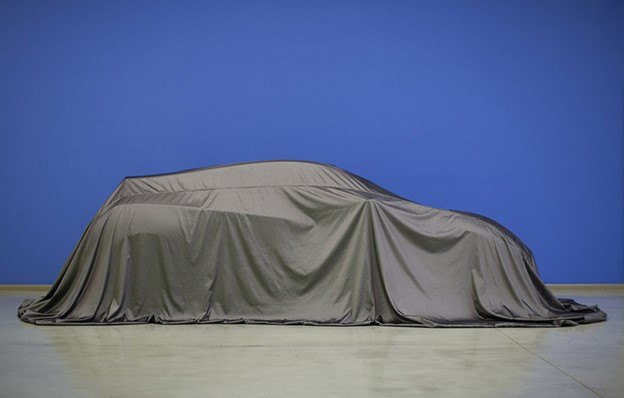












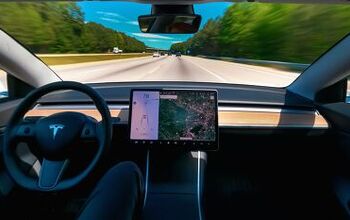
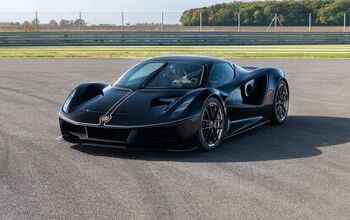

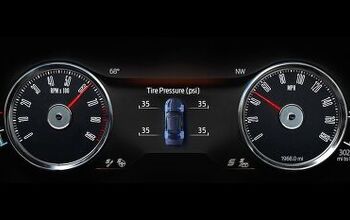

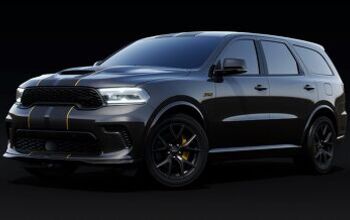
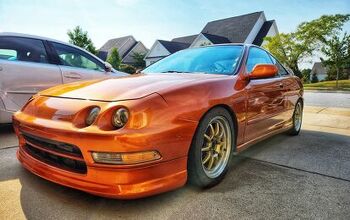



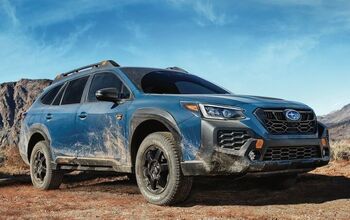

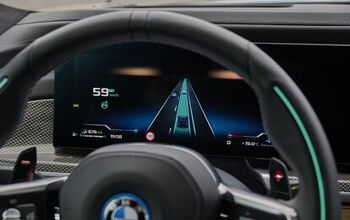


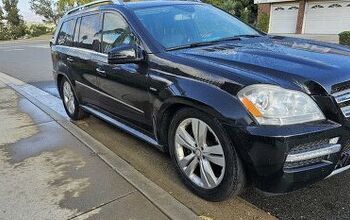

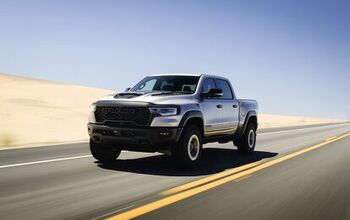
Comments
Join the conversation
Rivian will live and die on sales to the Lariat/King Ranch/Platinum crowd. Fleet managers won't have a bit of interest in a Rivian. Fleet managers are cost-driven to include running spreadsheets on the costs of running a truck. Nary a bit of interest. Oh, and your fleet manager will get their coffee at a gas station and wait for the auto-parts store to make their delivery.
"Fleet managers won’t have a bit of interest in a Rivian." If they woke they will.